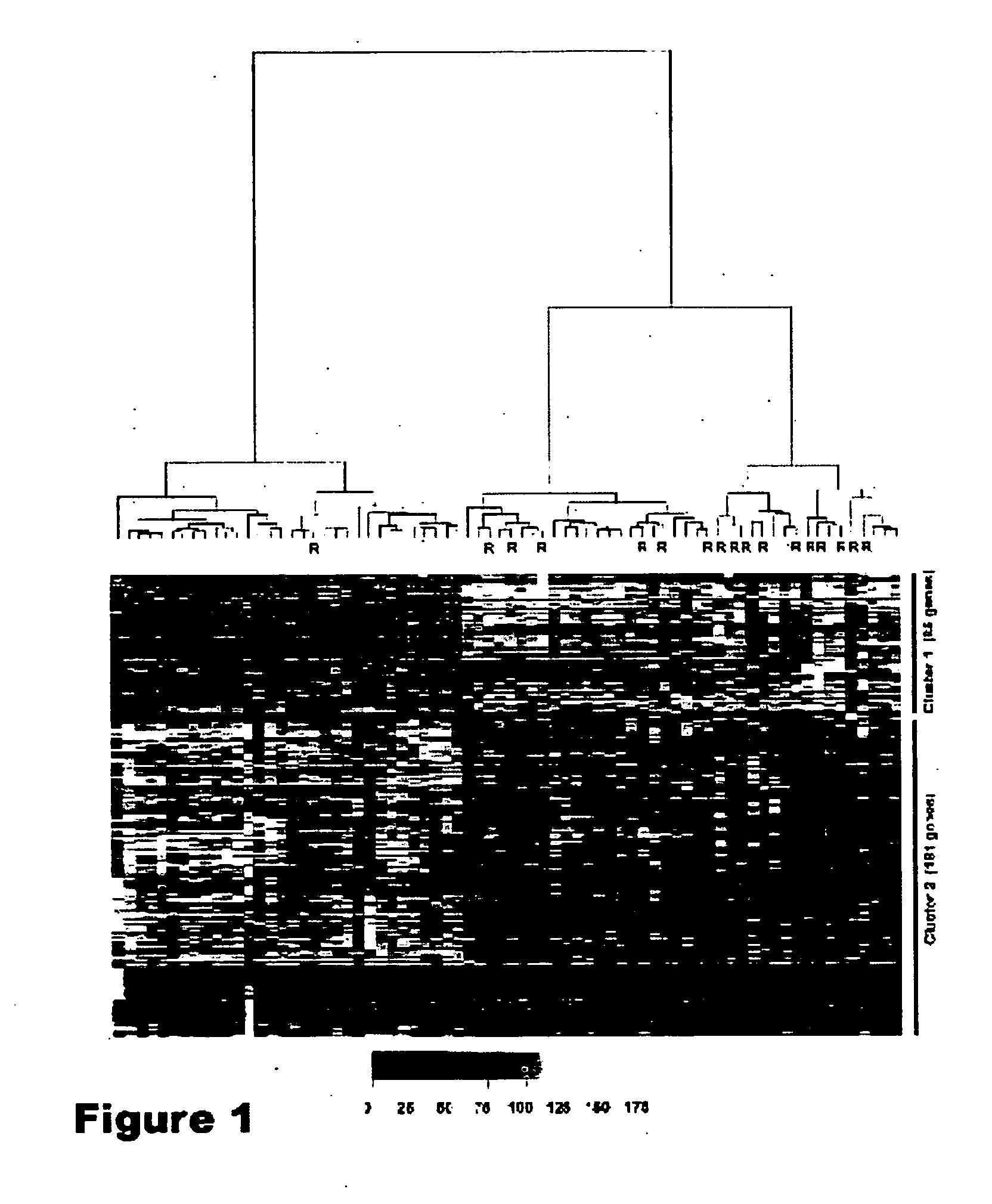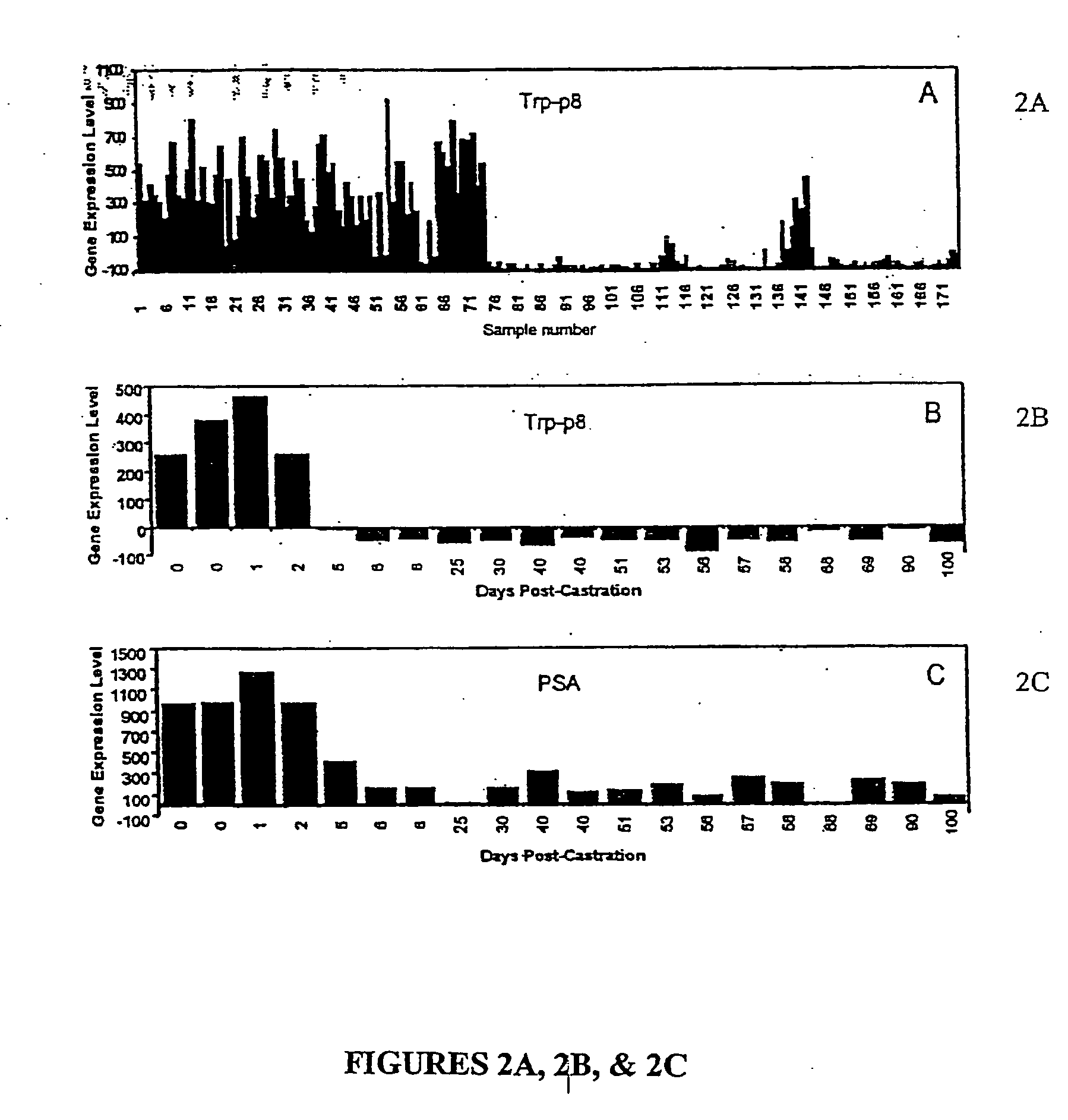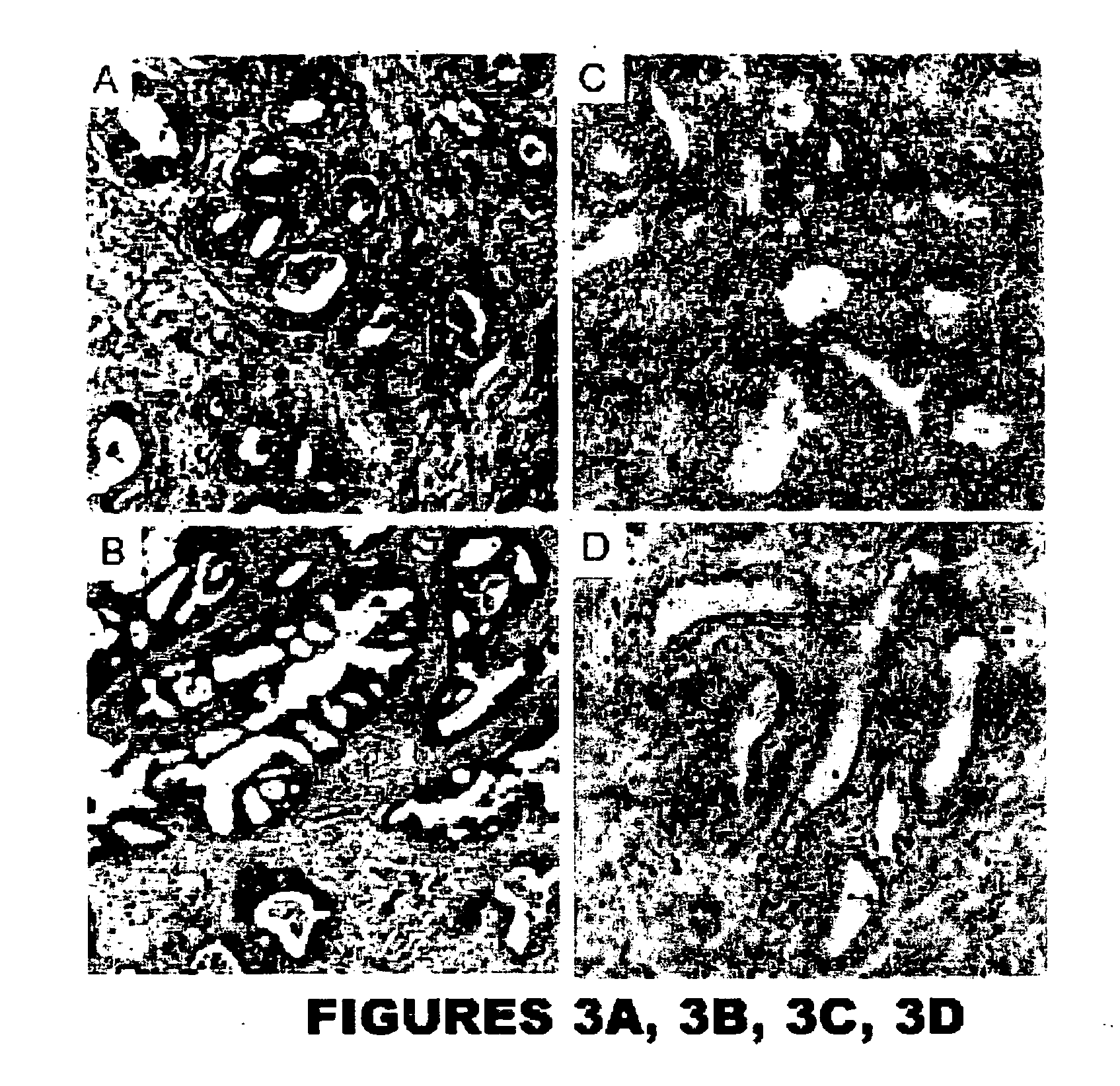Methods of prognosis of prostate cancer
a prostate cancer and prognosis technology, applied in biochemistry apparatus and processes, climate sustainability, fermentation, etc., can solve the problems of limited predictive power, no molecular markers of routine clinical utility, and classification systems that cannot explore differences in outcomes observed between cancers with similar histopathological features
- Summary
- Abstract
- Description
- Claims
- Application Information
AI Technical Summary
Benefits of technology
Problems solved by technology
Method used
Image
Examples
example 1
Study Design
Tissue Collection and Preparation of RNA
[0058] A cohort of 72 fresh-frozen prostate cancers was collected from patients with localized prostate cancer treated by radical prostatectomy RP at St. Vincent's Hospital, Sydney. The primary outcome, disease-specific relapse, was measured from the date of RP and was defined as a rise in serum PSA above 0.3 ng / ml with subsequent further rises. Following inking of the external limits of the prostate immediately after removal and prior to formalin-fixation, up to six, 5 mm core biopsies were taken and stored at −80° C. for a later RNA extraction. The proportion of invasive cancer in the biopsy sample was then estimated retrospectively by either frozen sectioning of the biopsy and hematoxylin and eosin staining, or by examination of archival formalin-fixed, paraffin-embedded tissue surrounding the biopsy site. Only those biopsies that contained ≧75% invasive cancer were used for subsequent transcript profiling. Only one biopsy pe...
example 2
Expression Profiling of Prostate Cancers
[0068] In this study, we sought to discover novel biomarkers that might predict for PSA relapse following radical prostatectomy utilizing outcome-based statistical tools to analyze gene expression profiles of 72 prostate cancers. A criteria for selection was the ability to predict recurrence better than preoperative serum PSA concentration alone, since PSA is one of only a handful of markers that provide preoperative prognostic information. The 72 prostate tissues were collected at the time of radical prostatectomy (RP) from patients undergoing treatment for localized prostate cancer at St. Vincent's Hospital Campus, Sydney, Australia. At last follow-up (median=28.25 months, range 4.9-90.3 months), 17 of the 72 (23.6%) patients had relapsed, of which 14 demonstrated a rise in postoperative PSA levels while 3 patients were diagnosed with a rising PSA and local recurrence of disease. Consistent with published data (5, 6, 13), the significant pr...
example 3
[0070] Each probeset's intensity value was entered as a continuous explanatory variable in a Cox proportional hazards survival analysis predicting relapse. Pretreatment PSA concentration was also entered as a predictor in each analysis. From this analysis, 264 probesets were found to be significant predictors of relapse at P<0.01. To assist interpretation, we next calculated the interquartile range hazard ratio (IQR HR) for each probeset. Because the expression data are treated here as continuous covariates, hazards ratios expressed in their natural scale illustrate only the change in risk of relapse associated with a change of 1 unit on the expression scale, a change too small to be comprehended easily. To put the hazard ratios and associated confidence limits on a more interpretable scale, we present here the hazards ratio associated with a change in expression values equivalent to 1 interquartile range (IQR) of the sample data for each probeset. The IQR is simpl...
PUM
| Property | Measurement | Unit |
|---|---|---|
| threshold | aaaaa | aaaaa |
| threshold value | aaaaa | aaaaa |
| PSA | aaaaa | aaaaa |
Abstract
Description
Claims
Application Information
 Login to View More
Login to View More - R&D
- Intellectual Property
- Life Sciences
- Materials
- Tech Scout
- Unparalleled Data Quality
- Higher Quality Content
- 60% Fewer Hallucinations
Browse by: Latest US Patents, China's latest patents, Technical Efficacy Thesaurus, Application Domain, Technology Topic, Popular Technical Reports.
© 2025 PatSnap. All rights reserved.Legal|Privacy policy|Modern Slavery Act Transparency Statement|Sitemap|About US| Contact US: help@patsnap.com



